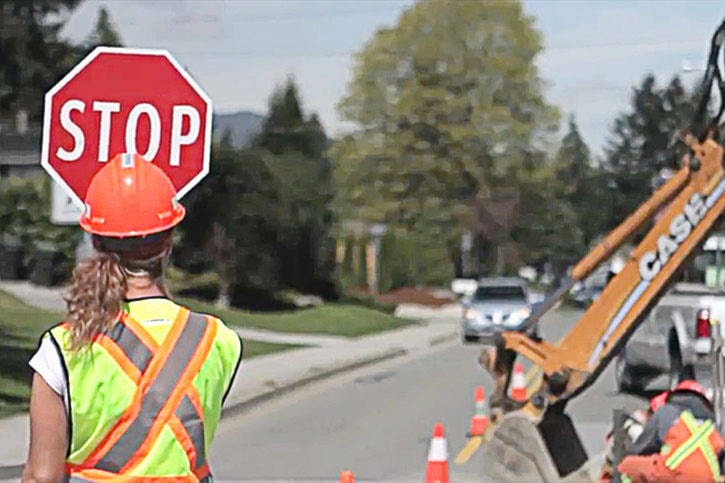Sarina Hanschke was directing traffic at a Lower Mainland construction zone one morning when a driver threw a hot coffee at her.
On another shift, a passenger in a car opened their door while the vehicle was in motion and hit her.
Roadwork projects are ramping up across the region as the weather heats up, and if Hanschke’s stories say anything, so will commuters’ reckless and startling behaviour as they drive through construction zones.
“It’s incredibly alarming to see this kind of behaviour,” says Hanschke, 29, tcp quality assurance for the B.C. Construction Safety Alliance. “Traffic, at the end of the day, is an uncontrollable hazard.”
These kinds of incidents make up her job as traffic control person, or flagger – a job she’s had since she was 18.
They represent the multitude of near misses hidden behind every worker who gets injured, or worse.
A total of 21 roadside workers were injured last year, according to a recent report from WorkSafeBC, while one person died.
How do you persuade people to drive carefully through construction zones, when all they want to do is get home after a long day on the job?
Public awareness campaigns have zeroed in on the fact that the workers are mothers, fathers and people’s children.
Hanschke says workers do their best to look out for each other, but the responsibility falls substantially on the flagger to see what’s up ahead.
Flaggers look out for any safety hazards amid the flow of cars and behind each steering wheel, she says, but things can still be unpredictable.
She says cement barricades can shield workers for long-term construction projects. But for short-term work, employees are usually protected by road cones, which can’t do much to deter a wayward car.
“At the end of the day, we’re at the mercy of the public,” Hanschke says.
Her now-retired dad worked in construction as long as she can remember, and her brother is also in the industry.
“I never realized how significant it was that my dad made it home safe every day until I was out there and had seen first-hand some of the behaviours that significantly impact your ability to do your job safely,” she said.
“If we can get one person to really second-guess and consider and slow down for that person working on the roadside … it forces the 10, 15, 20 cars behind them to slow down and pay a little bit more attention.”
